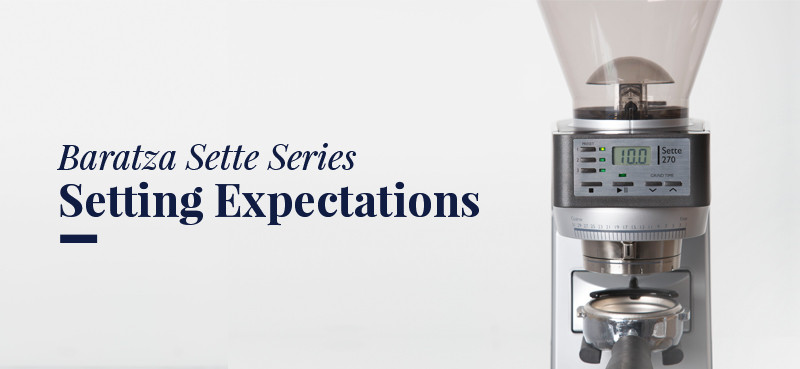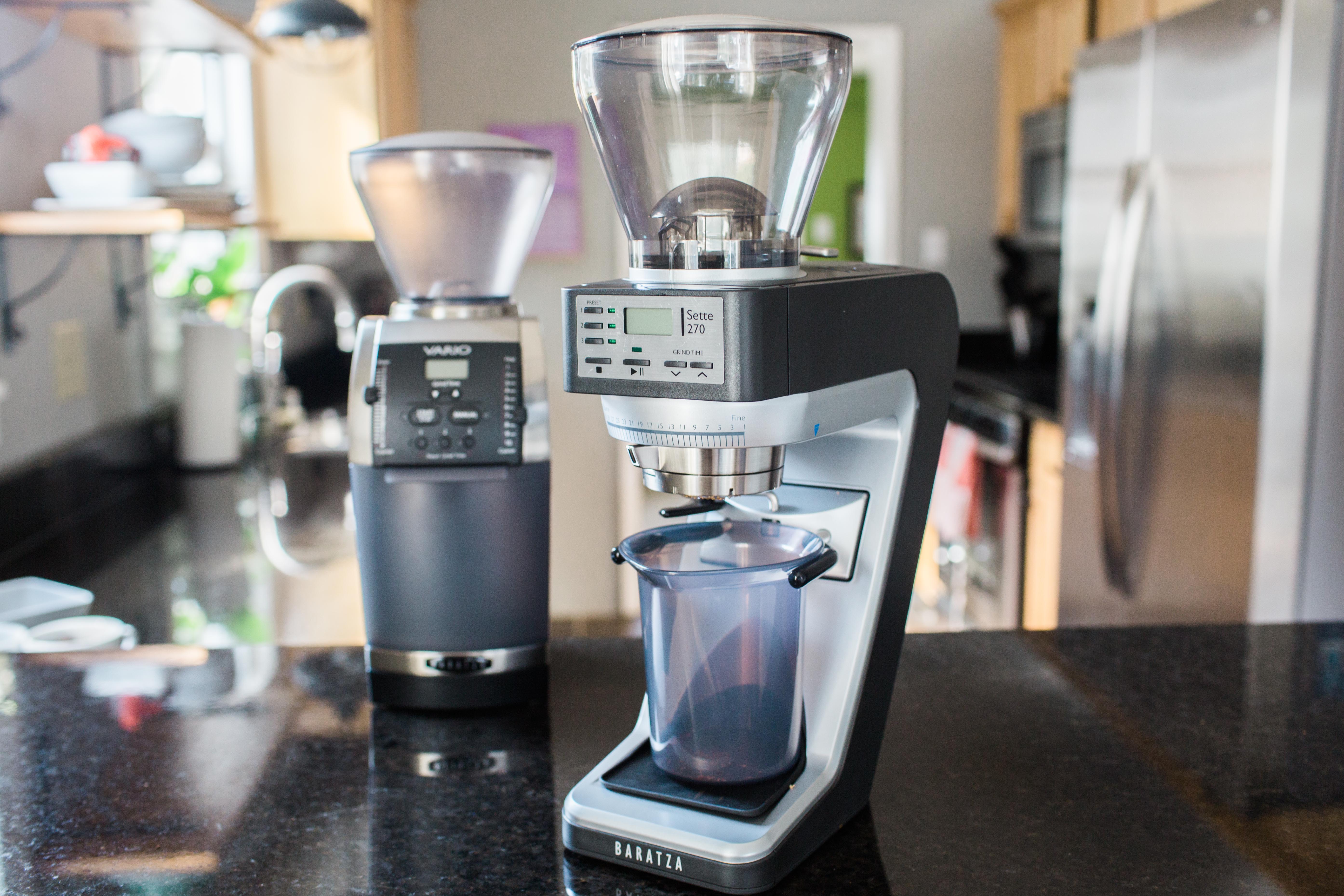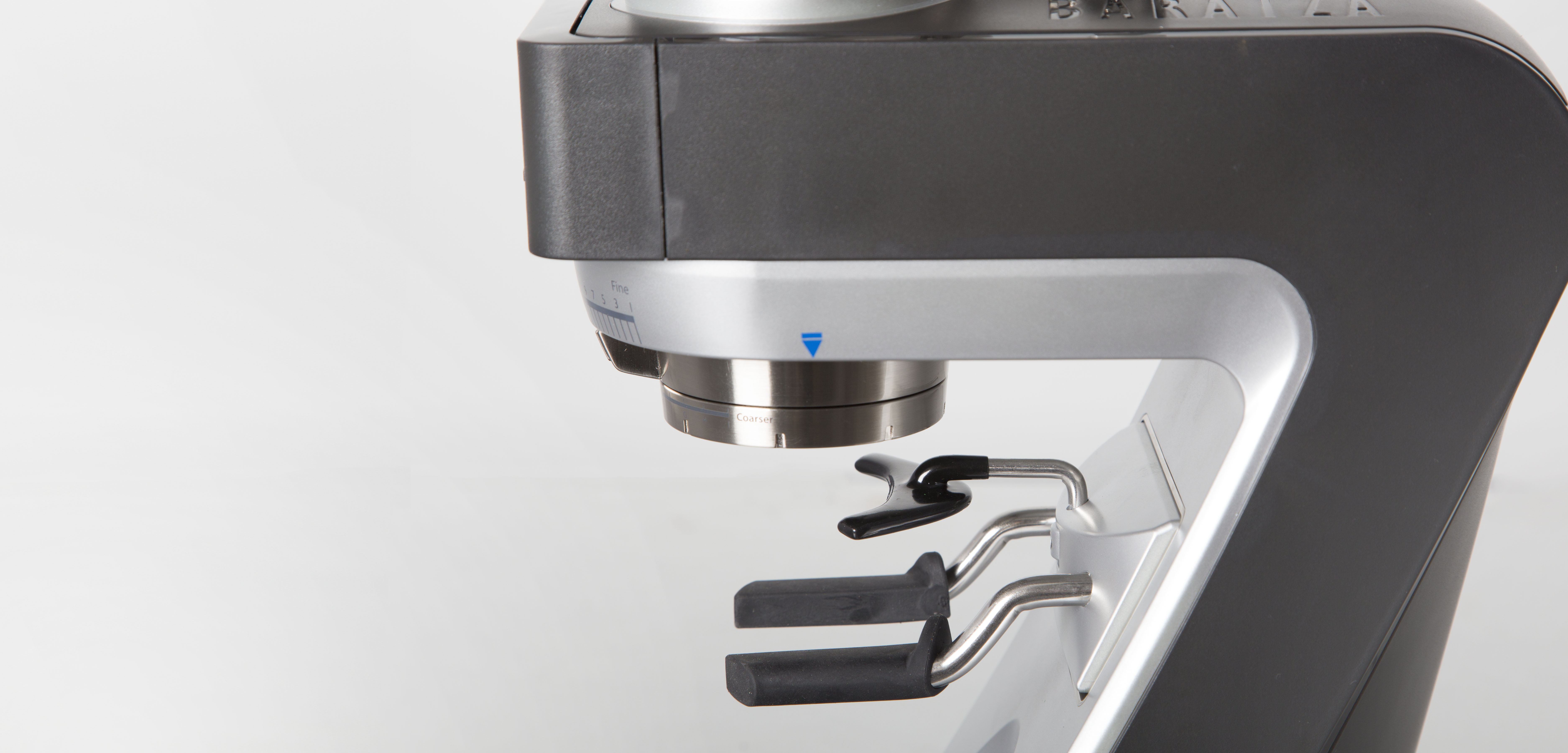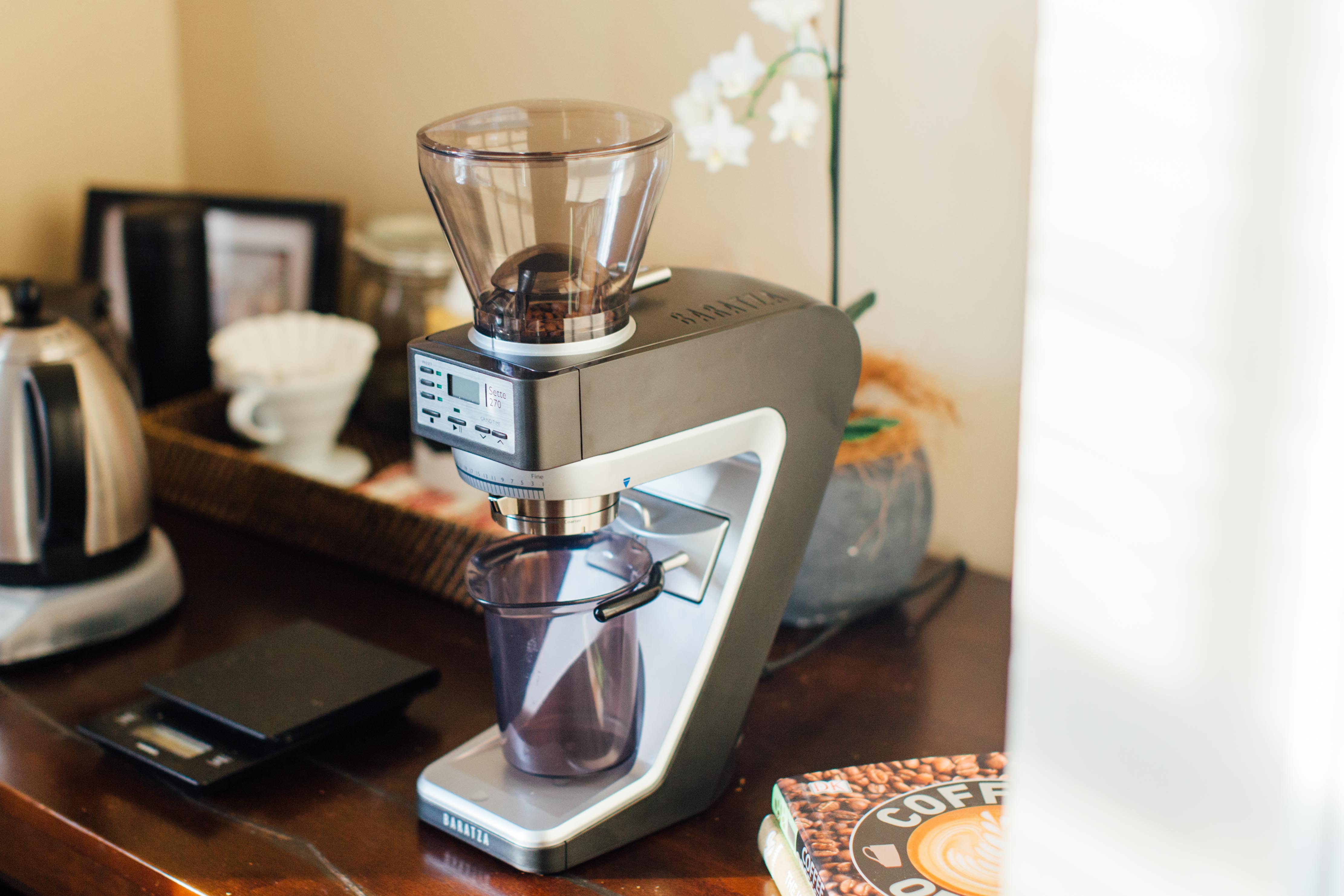Baratza Sette Series: Setting Expectations
Baratza’s newest line of grinders - the Sette series - were first announced about a year ago now to much excitement and fanfare. They promised speedy grinding with a brand new drive mechanism, stepless micro adjustment, and a whole new way to grind by weight. We’ve long known Baratza to produce great value grinders for the consumer side of the coffee world, and stand by them with equally excellent support. We’ve also tried to be fairly frank in setting expectations for what a Baratza grinder is capable of; these aren’t going to be EK43s, but they also don’t carry EK43 price tags and tend to perform quite admirably for their pricepoint. Since the Settes were finally released for sale last winter, we’ve found that some users have been having a hard time with their units, so we’d like to take a bit of time to address some of those concerns and complaints, as well as offer a bit of troubleshooting for some of the more common issues we’ve seen. The video below will take you through a quick rundown of some common issues, which we'll also explain in more detail in this post. Baratza also has a very useful FAQ Page which we'll reference a few times here.
Heat Generation and Duty Cycle
The Settes come with a brand new design for the overall shape and footprint, and ultimately a new design for the internal grinding mechanisms as well. This comes with some distinct benefits - the minimal retention and straight-through grinding path for example - as well as some potential snags and limitations. Both models of Sette grinder use a new planetary gear drive mechanism which turns the outer ring burr instead of the inner cone burr, as most other conical burr grinder do. Grinding speed is also incredibly fast for a home grinder, finishing an espresso dose in about 5-6 seconds, so between that extra speed and the heat added by friction in the grinding chamber and the gear drive system, the Settes do seem to run a bit warmer than their predecessors.
As far as we’re aware, all Baratza grinders come with thermal protection for their components (as do most coffee grinders in general), usually in the form of a thermal fuse which disables the electrical functions if a certain heat threshold is reached. Most of Baratza’s grinders are primarily intended for home use, and as such are not designed to stand up to high volumes of coffee grinding or long periods of running. Baratza has previously addressed what’s called a “duty cycle” for their products, or the best-practices for both run time and cooling time. Often, that looks something like 20 seconds on, and 60-90 seconds off - that is, grinding just enough for a dose of espresso or a moderately sized manual brew, and then allowing ample time for the grinder to cool down. That means that you really ought not to grind a full bag of beans all at once on any Baratza grinder, perhaps with the exception of the Forte, as they were designed to be heavier duty and are more commercial ready.
For the Sette series, Baratza has published a blog post to address the recommended duty cycle - in short, you should grind for about 5-30 seconds, then allow at least 60 seconds to cool before grinding again. Long periods of grinding or many sequential grinding sessions without adequate cooling time can cause damage to components, but more likely it will cause the thermal fuse to trip and the grinder will shut itself off. We don’t recommend high volume usage on any home grinder, but as our experience indicates that the Sette series runs a bit hotter than previous models, we do recommend trying to stick to the suggested duty cycles and being mindful of the heat generated by the grinder. If you have need for a higher volume grinder, we’d be happy to make some recommendations for your home or your cafe.
Overall Grind Range, Calibration, and Coarse Burrs
Our early experience with a pre-production Sette 270 was quite promising in terms of grind range: we were able to dial in for espresso (on a home machine, but not on our office’s Slayer Single Group), and we had decent results grinding for larger Chemex batches of around 750-1000 mL. As the burrs wore down a bit, the coarse range diminished slightly, as more fines were generated and made larger Chemex brews more difficult to dial in. However, as the retail grinders became available, it was apparent that the grind range was slightly different unit to unit (which we would consider to be normal for consumer coffee grinders) and that some users were having more difficulty with their coarse range.
The new design of the Sette series does include one notably large change from Baratza’s historical grinder design, in that it is not possible to calibrate the overall range of the grinder. With the Encore, Virtuoso, Preciso, Vario, and Forte, there is some kind of calibration screw within the grinder, which can be used to change the range from finer to coarser. On the Sette, the only option we have available is to install a shim beneath the cone burr to take the grind range finer and add more adjustability for espresso. If your stock Sette does not grind coarse enough for your preference, there is currently no way to adjust the range coarser.
Baratza is aware of this criticism and maintains that most Settes should be able to grind from espresso to a medium-drip grind, and we largely agree with them on that. We have received a few complaints of issues in the medium drip range, but performance does also depend on the coffees being used, as some coffees will generate more fines due to their roast level and brittleness. There is a bright side here, however: Baratza is going to sell an optional coarse cone burr, which should improve performance in the coarse range and make for better brewed coffee. We’ve tested one out, and it seemed promising with better drawdown times in our Chemex brews. Look for that to be available in the very near future. In the meantime, if you're mainly looking for a drip grinder with no real plans on espresso, you might want to consider a Virtuoso instead - it's a solid grinder, and we've long enjoyed the grind quality of its drip and coarse range.
Weight Based Dosing Consistency, Offset Calibration, and Stability
With the Sette 270W, Baratza has taken a brand new approach to their weight-based dosing mechanism. Now, the load cell is placed behind the portafilter forks of the grinder, allowing for weight-based dosing directly into a portafilter or into a catch cup, drip cone, or really whatever you like that can be fitted onto the forks. This is a novel technique that isn’t found in any other grinder yet, but it does come with a few idiosyncrasies of its own.
One of the main concerns for getting accurate dosing with the 270W is to make sure that the whole system is steady and stable. We initially had issues with our first unit because we had set it up on a stainless steel work table, whose surface was actually quite prone to vibrations. Even though the Sette 270W uses a pretty nice load cell with Acaia scale tech, no scale is going to perform all that well if it’s wobbling and shaking during use. So the very first thing a 270W owner should do is to make sure the grinder is on a steady and solid surface, and check to make sure all five feet on the bottom of the grinder are making even contact with the surface. Previously, Baratza has recommended that users wet the feet with water so they can be re-inserted more easily and more fully, but we’ve noticed that newer units are being shipped out with thin metal shims on some feet and they are already quite level right out of the box. Still, if you have any weight consistency issues, you may need to tweak the rubber feet to get the grinder stable.
When dosing into a portafilter, you should also make sure to adjust the forks for a nice snug fit. Again, if there’s a wobble to your weighing, the measurement will likely be off. Baratza’s newer design to the portafilter forks is quite stable with most portafilters, but it does need to be properly adjusted first. Make sure the center fork is set to the appropriate height for your portafilter, and if needed, rotate the side fork pads slightly upward to wedge the portafilter in a bit more. A snug fit will limit vibrations from the portafilter handle, and help you get a more accurate dose each time.
Finally, if you notice that your doses are consistently off by a little bit, you may want to tweak the grind offset. Because there’s a delay between when the coffee is actually ground and when the grounds hit the portafilter or bin, the Sette’s brain uses an offset to know when to stop grinding and better hit its target mass (with a little variance, since coffee itself is variable when grinding). This offset value can be adjusted to better hit the mark, and will need to be set to different values for espresso and drip coffee grinding. The offset is easy to adjust in just a few seconds, as seen at the end of the video above - just unplug the grinder, and after plugging it back in hold both the dose up and dose down buttons until the grinder beeps and displays “OFS” on the screen. Then use the dose up or down buttons to adjust the value, and hit the Play button to save. The grinder will reboot and your new offset value will be stored.
Control Board Ground Wire
In a few rare cases, we’ve had reports of control boards turning off momentarily or becoming completely unusable. Baratza has worked with us on diagnosing these issues, and it seems there is sometimes a cross-connection issue with the ground wire on some control boards. Most times, this can be fixed by correcting the ground wire connection or positioning, but it may require professional service if you’re not up to playing with your own electronics. Baratza are aware of the issue and have worked to correct how the grinders are assembled. If you're up to fixing it yourself, contact our customer service team and we can get you set up with detailed instructions.
Other Issues or Troubleshooting
As always, our customer support team is here to help if you’re running into trouble with your products, or if you're looking to find out if one of the Settes will be the right fit for you. Baratza, as well, is available to help with support issues that may be mechanical or electronic in nature, and they have put up a great FAQ page to help address some of the more common questions that have come up.






